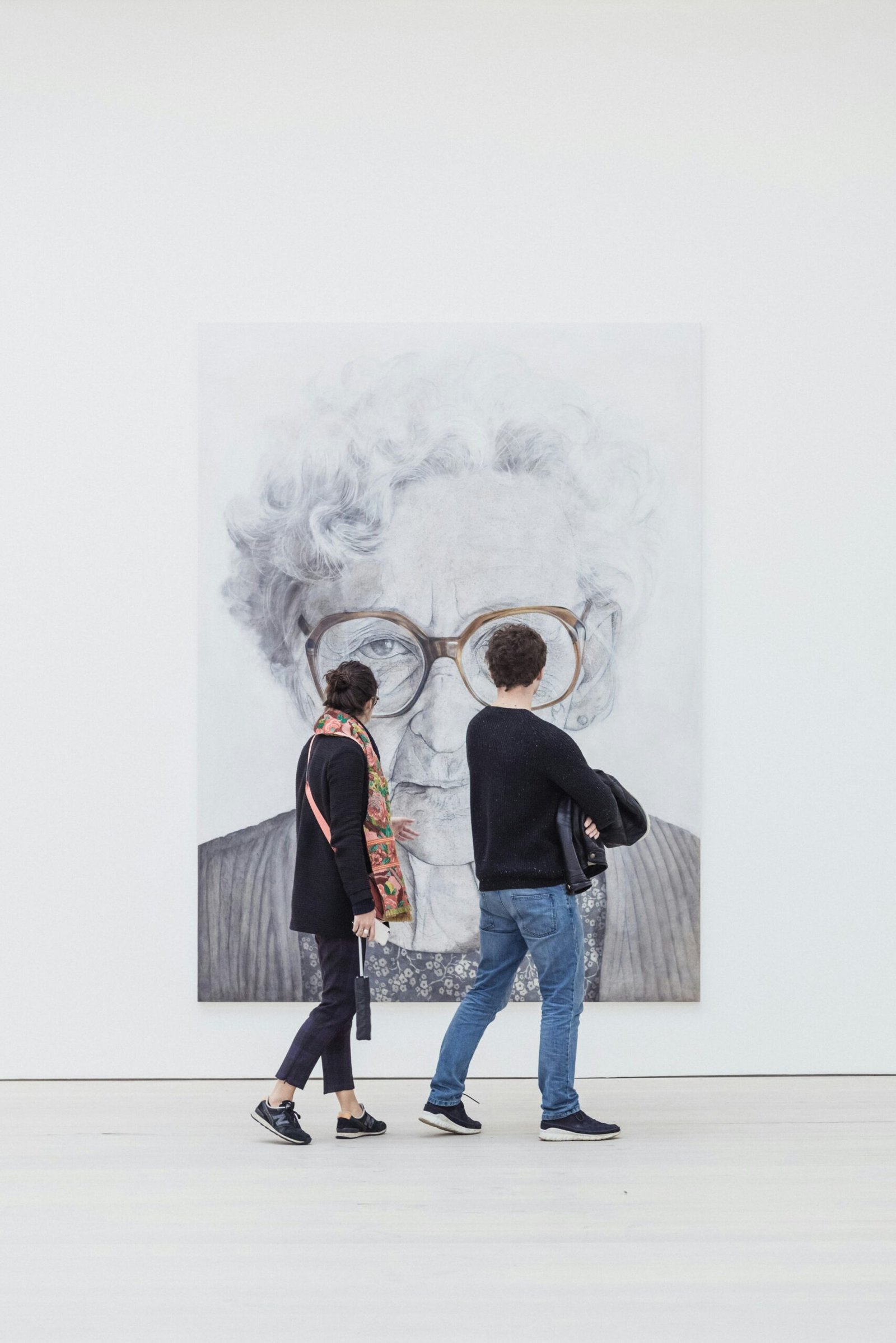Get ready to be awed by the incredible exhibition “Giants: Art from the Dean Collection of Swizz Beatz and Alicia Keys” at the Brooklyn Museum. This unique exhibit showcases the extensive art collection of the musical superstars Swizz Beatz and Alicia Keys, while also putting the collectors themselves on display. Among the standout pieces is Kehinde Wiley’s towering 25-foot-long painting “Femme Piquée par un Serpent,” which challenges the paucity of Black representation in art history. Whether you appreciate the painting for its visual appeal or dissect it as a conceptual work, this exhibition promises to captivate and stimulate your senses.

Artworks on Display
Kehinde Wiley’s “Femme Piquée par un Serpent”
Artworks from the Dean Collection
The exhibition “Giants: Art from the Dean Collection of Swizz Beatz and Alicia Keys” at the Brooklyn Museum showcases several noteworthy artworks, including Kehinde Wiley’s “Femme Piquée par un Serpent.” This painting, created in 2008, depicts a Black man reclined in a twisted position, complemented by Wiley’s distinctive floral background. The title and pose are borrowed from an 1847 marble sculpture by Auguste Clésinger. Alongside Wiley’s piece, the Dean Collection also features various other artworks that contribute to the overall significance and impact of the exhibition.
The Significance of ‘Giants’
Celebrity Tie-in Exhibitions
Art as a Cultural Statement
“Giants” serves as yet another example of a celebrity tie-in exhibition at the Brooklyn Museum. This trend allows artists, musicians, and other public figures to showcase their personal art collections, shedding light on their interests and passions beyond their usual creative endeavors. Moreover, “Giants” highlights the power of art as a cultural statement. Through their collection, Swizz Beatz and Alicia Keys demonstrate their support for artists and their important role in shaping society.

Kehinde Wiley and the Representation of Black Faces
Wiley’s Ongoing Project
Challenges in Western Museums
Kehinde Wiley’s “Femme Piquée par un Serpent” is part of his ongoing project, addressing the underrepresentation of Black faces in Western museums and art history. Wiley’s work aims to challenge the traditional canon, which has often ignored or marginalized Black artists and their subjects. By creating large-scale paintings featuring Black individuals in positions of power and dignity, Wiley seeks to reclaim and reshape the narrative around Black identity. This approach is not without its challenges, as Western museums have historically exhibited a lack of diversity in their collections and narratives.
The Visual Appeal of ‘Femme Piquée par un Serpent’
Color and Composition
The Thrill of Seeing a Large Black Figure
“Femme Piquée par un Serpent” captivates viewers with its vibrant colors and thoughtful composition. The bright, bold hues used by Wiley draw attention to the figure’s presence, allowing them to stand out against the floral background. Additionally, the large-scale nature of the painting enhances its impact. Seeing a monumental Black figure on display in a museum setting can evoke a sense of thrill and empowerment, especially considering the historical underrepresentation of Black individuals in art spaces.

Critique of ‘Femme Piquée par un Serpent’
Lack of Details in the Painting
Absence of Human Touch and Sensuality
While “Femme Piquée par un Serpent” is visually appealing, some critics argue that it lacks intricate details. Upon close inspection, there may be a sense of disappointment that the painting does not offer the same level of detail as one would expect from a traditional painting. Additionally, the absence of visible evidence of human hands at play and the lack of sensuality in the painting may leave some viewers wanting a deeper connection with the artwork.
A Conceptual Work and a Good Painting
Balancing Conceptual and Aesthetic Aspects
Ambivalence and Frustration
The discussion surrounding “Femme Piquée par un Serpent” revolves around the balance between its conceptual aspects and aesthetic qualities. As a conceptual work, the painting effectively addresses the exclusion of Black subjects and artists from art history. However, when approached strictly from a painting perspective, it may fall short in meeting certain expectations. This duality can lead to ambivalence and frustration for viewers who desire both a clear conceptual message and a visually satisfying painting.
Overview of the ‘Giants’ Exhibition
Celebrity Collectors: Swizz Beatz and Alicia Keys
Artists and Artworks Featured
“Giants” presents a diverse array of artworks from the personal collection of Swizz Beatz and Alicia Keys. As celebrity collectors, their selection showcases their individual tastes and preferences. The exhibition includes works by 37 artists, with a particular emphasis on American artists. However, it also features artists from Europe and Africa, highlighting the global reach of the collection. The exhibition spans multiple generations, with artists ranging from Ernie Barnes, who passed away in 2009, to Qualeasha Wood, born in 1996.
The Diversity of ‘Giants’
American and International Artists
Generational Range of Artists
One of the strengths of the “Giants” exhibition is its diversity in terms of the artists represented. While the majority of the featured artists are American, there is also representation from various international artists. This international perspective broadens the exhibition’s impact and reinforces the universality of art. Moreover, the range of generational artists adds depth to the show, spanning different eras and providing a glimpse into the evolution of artistic expression.
Prominent Artistic Endeavors
The Successes and Failures of ‘Giants’
Previous Celebrity Tie-in Exhibitions at the Brooklyn Museum
“Giants” joins the ranks of previous celebrity tie-in exhibitions at the Brooklyn Museum, showcasing the intersection between the art world and the entertainment industry. These exhibitions often generate significant attention and public interest, providing visibility for both the artists and the collectors. While they can be successful in introducing new audiences to the world of art, they are not without their critics. Some argue that the celebrity factor overshadows the artworks themselves, potentially detracting from their intrinsic value. However, in the case of “Giants,” the thoughtfully curated selection helps mitigate this concern.
Conclusion
Reflection on the Impact of ‘Giants’
Importance of Art as a Cultural Medium
In conclusion, “Giants: Art from the Dean Collection of Swizz Beatz and Alicia Keys” at the Brooklyn Museum offers a thought-provoking exploration of art, culture, and representation. Kehinde Wiley’s “Femme Piquée par un Serpent” serves as a powerful centerpiece, sparking discussions about the representation of Black faces in Western museums. The exhibition as a whole highlights the significance of art as a cultural medium, capable of shaping narratives, challenging norms, and providing a platform for diverse voices. “Giants” urges us to embrace art’s transformative power and recognize the importance of inclusion and representation in the art world.







